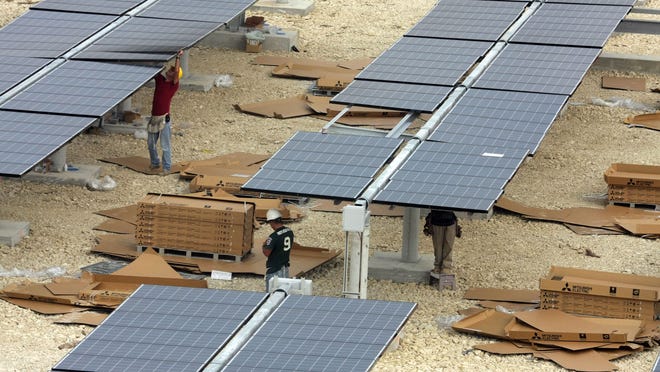[ad_1]
Lina Ramirez Granada and Dr. Jennifer Jones

Our planet is flooding, on fire, and life as we know it is changing, but we cannot let complacency get the best of us. Despite the continuing human-driven destruction of Earth, the single greatest threat we face is the idea the battle has already been lost and we are powerless to change our fate.
David Wallace-Wells, author of The New York Times bestseller “The Uninhabitable Earth: Life After Warming,” recently visited Florida Gulf Coast University in Fort Myers. He left much of his audience in despair, questioning if there is anything they could possibly do to avoid the hellish future depicted in his book.
But all is not lost. We can chart a different path; we can create and harness hope to make the world a better place. A new year brings the power of renewed hope and new beginnings. Hope is about creative possibilities and it comes from within each of us. We create our own hope by identifying personal goals and pathways to reach them.
Hope in the face of a climate crisis means being part of the solution here in Southwest Florida and all of Florida, such as working toward better land use, green infrastructure design and solutions-focused education.

Politicians, large companies and those unwilling to change their ways will continue to push change-seekers down by berating them with fears of economic impact and lost revenue, but the reality is this: If we don’t begin investing in our long-term future, it’s just the opposite. When our land use and infrastructure are designed with an eye toward nature, it can protect people and property from negative impacts, as well as reduce its own contribution to climate change.
We are part of Florida Gulf Coast University, a campus that works with nature rather than against it. With 400 acres of protected areas and many LEED-certified buildings, this campus continues to strive and instill sustainability practices into each student who walks its halls and trails.
Leadership in Energy and Environmental Design or LEED buildings are certified through a rigorous framework that promotes the construction or refurbishment of buildings into healthy, highly efficient and cost-saving structures through green infrastructure and design. Certified buildings are not only good for the environment, mitigating the negative impacts of development on its site, but also the tenants, via parameters of indoor environmental quality.
FGCU is also a haven for biodiversity. Campus ecosystems are habitat and range for over 800 documented species of plants and animals, including roughly 70 bird species and even the Florida panther. During and after Hurricane Irma in 2017, FGCU buildings and roads were minimally impacted by flooding because of the inclusion and protection of wetlands and associated conservation areas on campus. Wetlands act as nature’s flood control and stormwater storage basin, protecting the adjacent landscape and minimizing economic impacts, demonstrating time and again that investing in environmental conservation is always good business.

Our people are also a great source of hope. In attendance at the talk by author Wallace-Wells were organizations and groups of people striving to be part of the solution for all of us. A bright spot was a group of students from Gulf Coast High School’s Youth Against Climate Change (YACC) club. YACC was formed in September 2019 with the purpose of creating networks and future climate leaders across Collier County Public Schools. The group’s aim is for teachers and students from every school to work together across the county, sharing resources, ideas and volunteer opportunities on climate change solutions, from policy initiatives to education programs.
Four YACC students attended the Wallace-Wells presentation and demonstrated how they are doing their part, even at a young age. These teenage trailblazers serve as mentors to local middle school students as part of Watershed Education for Resilience in Southwest Florida (WATERS), a climate change education program operated by FGCU’s Center for Environment & Society. Through Project WATERS, the YACC students teach younger children about local issues of climate change, such as sea-level rise and habitat shift. But perhaps more importantly, they serve as role models for action, role models for leadership, role models for hope.
More:Guest opinion: Let’s invest more in climate change resilience for future prosperity
More:Guest opinion: Caring about people means caring about climate change
Naysayers will insist the cost of investing in climate resiliency, such as LEED infrastructure, is too high. But that’s part of the point, isn’t it? That we are investing in our futures, our health.
In ecology we learn that ecosystems are always in transition, and the only real constant is change. Yet as humans, we have become so enamored in our ways that we view changes to our economic and social structures processes as attacks on our very souls. Thankfully, there are people and organizations around Southwest Florida leading the way. We invite you to join them and construct your own hope.
Lina Ramirez Granada is a graduate student and Dr. Jennifer Jones is director of the Center for Environment & Society in The Water School at FGCU.



